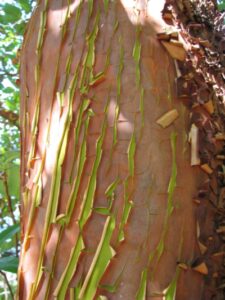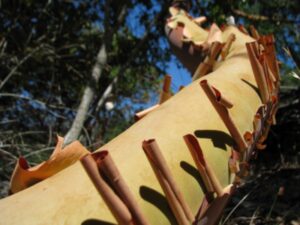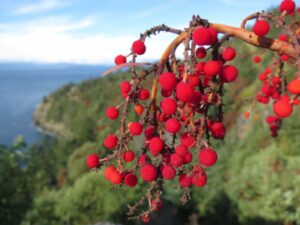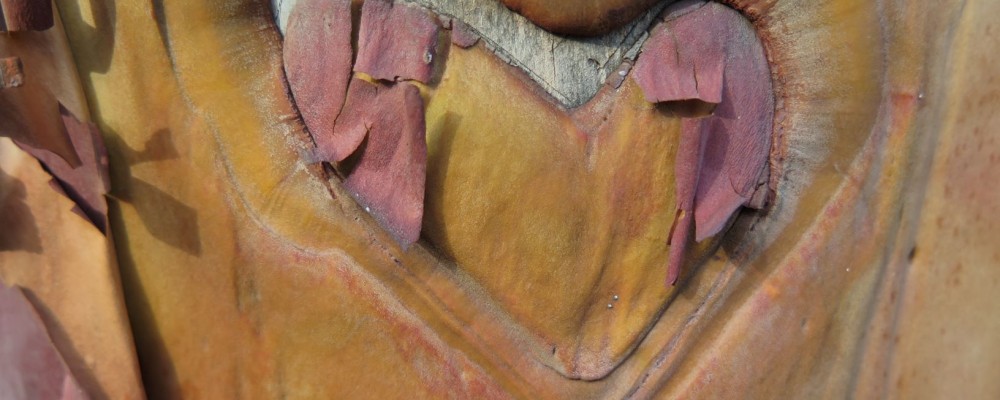–Miles Becker, SJC Land Bank Commissioner – Disctrict 3, position 3
Throughout the islands, the toned, muscular trunk of Pacific madrone trees stand out amongst neighbors of evergreen and drab broadleaf trees. Often curving and suspended at impossible angles, their strong stems display orange and red-hued bark that peels back to reveal a fresh green.  What exfoliating bark does for this species is a bit of a mystery.
What exfoliating bark does for this species is a bit of a mystery.
In general, bark is a multi-tasker. It can deflect injury, dissuade attacking pests or colonizing diseases, and shield from sunburn or frost bite. Very thick bark protects against animal herbivory and perhaps against a more deadly threat, fire. All these functions suggest an advantage to having thick skin, which madrone clearly does not.
Thin-bark vulnerability to fire may be a long-term strategy for madrone trees. Individual trees are unlikely to survive a high intensity fire that opens up the canopy. Madrone are not especially shade tolerant, yet they may grow faster than other species when a fire creates a gap in forest cover. Stump sprouts and seeds waiting in the soil opportunistically erupt before the competition for light gets too serious. A prolific producer of a nnual seeds and a lifespan of up to 400 years means a mature madrone can patiently wait for fire to usher in the new generation.
nnual seeds and a lifespan of up to 400 years means a mature madrone can patiently wait for fire to usher in the new generation.
That wait seems to be longer and longer with fire suppression as a principal component of forest management for the past 100 years. Pacific madrone populations across their West Coast range are declining, possibly because of human-mediated shifts in fire regimes that results in more canopy closure in some areas. A suite of pests and diseases, led by the introduced Phytophthora ramorum, also contribute to the problem. The notorious difficulty with planting madrone from seed or transplanting does not help, either.
It is far too early to write off the future of madrone in our forests. A tree that produces springtime nectar in bell-shaped blossoms, satiates animals in autumn with bright red berries, provides cavities for nests, treats a suite of ailments with stripped bark, and inspires license plates is worthy of keeping around. Groups like the Arbutus ARME of Washington State University are learning more about the tree and how to reverse its slow fade from the landscape. You can help out by sending your madrone observations in to their regional database. 


